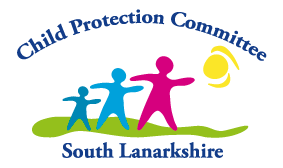Responding to child protection concerns
If a child or young person is believed to be at immediate risk of significant harm, social work and police need to decide whether any immediate action should be taken to protect the child and any other children in the family or wider community.
However, in most cases, where there are more general anxieties about a child’s welfare, social work and police will make initial enquiries and gather information on the child’s circumstances from various agencies.
Having considered this information, it may be apparent that the concerns raised over a child’s welfare will not need a response under local child protection procedures. It might be decided that some other response is more appropriate, for example offering guidance, assistance or other services to the family.
Under Girfec (Getting it right for every child) arrangements, where there is a Child’s Plan in place, these would be recorded in the plan.
Child protection investigations
If following initial checks, it is felt a child protection investigation is necessary, trained staff from key agencies including social work and police carry these out in a co-ordinated way.
Other agencies may also be involved in providing information and supporting the child throughout this time.
It’s important for social work and police to consult all the relevant services and for these agencies to provide as much information as possible to inform the investigation and risk assessment.
Health staff also need to be involved in planning all child protection investigations to ensure appropriate decisions about the wider heath needs of the child are made and whether or not medical examinations are required.
What happens after an investigation
Following an investigation, if concerns about significant harm to the child are not substantiated, social work will consider if the child still has unmet needs that require support and this is be recorded in the Child’s plan.
Where there are concerns about likely or significant harm to a child, a Child Protection Case Conference is convened, if this had not already happened. This will decide whether a child’s name should be added to the Child Protection Register and develop a Child Protection Plan.
In cases where it’s though necessary to remove a child, the child’s parents or carers may agree to local authority social work providing the child with accommodation and looking after them till concerns bout the child’s safety can be clarified. Or social work might consider if there are extended family members who could look after the child.
But in some cases, it’s necessary to apply to a sheriff for a Child Protection Order which authorises the removal of the child from circumstances in which they are at risk to a place of safety or the local authority may apply for an Exclusion Order which requires the removal of a person suspected of harming the child from the family home.
It’s also possible to seek a Child Assessment Order if it’s suspected a child may be suffering significant harm and that those with responsibility are preventing an assessment of the child being undertaken to confirm or refute that concern.
Communication with children and families
Throughout the whole process, children must be helped to understand how child protection procedures work and the need to develop co-operative working relationship with family members and carers must be given attention.
It is recognised that this can be a very difficult time for children and their families and it’s important all agencies work together to make this process as smooth as possible and minimise the stress involved. It’s also important that agencies are kept informed of what is happening and that feedback is given to the person who referred the case on action taken.
If you would like more information on Identifying and responding to concerns about children, read Chapter 3 of the National Guidance for Child Protection in Scotland.
